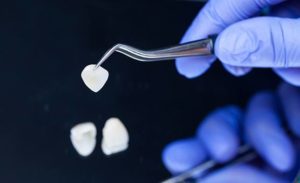J. Peter St. Clair, DMD Blog
DENTISTRY IN THE NEWS – PART 1
May 7, 2024
A recent U.S. News & World Report featured seven pages of information on dentistry. Although I was surprised that most of the information was accurate, as the media often skews the facts to make a point, there were a few things that I felt needed clarification.
The first article highlights the fact that 75% of adults have some form of periodontal disease. This is true. It also mentions many of the known facts with regards to gum disease and systemic health. One of those is that uncorrected gum problems can make it more difficult for diabetics to control their blood sugar, and in turn worsen their gum problems. This is also true.
With regards to brushing, the article states, “Scrubbing with fluoride toothpaste robs oral bacteria of sustenance.” This is true to some extent but the term “scrubbing” is not completely accurate. Proper brushing technique with either a very soft manual toothbrush or good electric toothbrush is a more accurate description. Also, fluoride, in and of itself, is not truly anti-bacterial. Although it is felt that its anti-cavity action is related mainly to effects on mineral phases of teeth and on the process of remineralization (strengthening enamel), research does show that fluoride also has important effects on the metabolism of bacteria in dental plaque. There are other ingredients in toothpastes with and without fluoride that are more anti-bacterial, but it is the removal of plaque manually that is most important, even without toothpaste.
With regard to electric toothbrushes, the article insinuates that “basic” and “cheap” ($7) models are as effective as more expensive models. This is false. Although you do not have to buy the most expensive model available, there is a huge difference in effectiveness between a $7 battery-operated toothbrush and a $70 wall-charged one.
The article states, “Only floss can reach below the gum-line.” This is not completely true. Proper toothbrush technique gets below the gum-line on two sides of the teeth. Floss is important for removing debris between teeth. A water pik is probably most effective for cleaning the non-brushable areas in the mouth.
For combating bad breath, the article’s first suggestion is to “brush your tongue.” Although it mentions the use of a tongue scraper, it only states the use of this device if your toothbrush makes you gag. The fact of the matter is that a tongue scraper is 100% more effective in removal of the nasty bacteria on your tongue. If the toothbrush makes you gag so will the tongue scraper. One trick is to scrape your tongue while you are exhaling. An article in the report entitled, “21st-Century Dentistry” highlights the use of lasers in treating gum problems.
The beginning of the column gets you revved-up to believe that this is the best thing since sliced bread, but the end of the article states differently. “It is unlikely to fully replace traditional gum surgery anytime soon. The laser therapy isn’t demonstrably superior to surgery, researchers recently reported in the Journal of Periodontology.”
To be continued…….
Dr. St. Clair maintains a private dental practice in Rowley dedicated to health-centered family dentistry. He has a special interest in treating snoring, sleep apnea and TMJ problems. If there are certain topics you would like to see written about or questions you have please email them to him at jpstclair@stclairdmd.com
BASEBALL + TEETH = BAD
April 29, 2024
 Baseball season is here. Here’s a lesson about why it’s important to protect your teeth no matter what you are playing.
Baseball season is here. Here’s a lesson about why it’s important to protect your teeth no matter what you are playing.
In the spring of 1939, in celebration of the 100th year anniversary of baseball, catcher Joe Sprinz of the Pacific Coast League’s San Francisco Seals announced that he would attempt to establish the world record for catching a baseball dropped from the highest height ever — 800 feet. It would occur during a baseball game before a crowd of 15,000. Coincidently it was Sprinz’s 37th birthday too.
Five balls were to be dropped from the Goodyear blimp hovering overhead. Sprinz missed the first four balls. But on the fifth, the blimp’s captain, A. J. Sewell (an ace bomber pilot during World War I), said he “thought that Sprinz had it.” He added, “From the ship [blimp] it looked as if it hit his glove first. … He walked quite a ways and then sat down. Then some persons crowded around him and we saw him lying down.”
A University of California mathematician calculated the ball was traveling at 145 miles an hour when Sprinz made his catch. The force of the ball gathered as it descended from the blimp, tearing Sprinz’s hands apart, causing the ball to crash against his face. Sprinz had knocked out eight teeth, fractured his upper jaw, broke his nose, and severely lacerated both lips.
The following day, Sprinz “murmured” through his hospital bandages and a wired jaw reflecting on what happened: “I had the ball judged all the way. The ball hit my glove. … [It] didn’t hit my face. The jar of the ball drove the mitt back against my mouth and caused all the damage.”
“Most of the eight teeth lost were bridgework and can be replaced,” his doctor noted. Sprinz chimed in that he was more hurt and baffled by his failure to hold onto the ball “than he is hurt by his hurts.” He returned the following year in May 1940 as the starting catcher for the Seals, claiming he was “just as good” as he was before the accident.
After his retirement from baseball in 1942, he worked with the Seals back office and later with little leagues and the San Francisco Parks and Recreation Department, developing intercity baseball. Sprinz died in 1977 in San Francisco. He was 91.
Sprinz’s catch was officially recorded in the Guinness Book of World Records as the World’s Highest Catch in 1994.
In 2013, baseball sportswriter Zack Hample decided to break Sprinz’s record. He accomplished the feat in July 2013, catching a baseball dropped from a helicopter at 1,050 feet. Unlike Sprinz — and maybe because of him — Hample wore protective gear, including a catcher’s mask, hard-shell protective headgear, and breast plate. Nobody from the Guiness World Record organization attended, although invited. Hample lost no teeth. Officially, Sprinz still holds the record.
Lesson #1: Don’t’ try to catch a baseball dropped from any flying machine; it’s not worth it.
Lesson #2: Baseball is not considered a contact sport but there are many ways “contact” can be made with the mouth. Despite the fact that mouthguard protection is not the “in” thing to do when playing baseball, I highly recommend it.
Dr. St. Clair maintains a private dental practice in Rowley dedicated to health-centered family dentistry. He has a special interest in treating snoring, sleep apnea and TMJ problems. If there are certain topics you would like to see written about or questions you have please email them to him at jpstclair@stclairdmd.com
SWEET TOOTH
April 22, 2024
Dental caries (cavities, decay) is still very prevalent in today’s society. There are many factors that contribute to dental decay. In addition, there are some people who are more susceptible to decay than others. In a recent article in the Journal of the American Dental Association (JADA), sugar-sweetened beverages, one of the main culprits for dental decay, was discussed.
Dental decay is a multifactorial disease characterized as an infectious process during which carbohydrates are fermented by specific oral bacteria at the tooth surface. This results in acid production and enamel breakdown. It should be noted that the beverages described in this column are not the only things that lead to dental decay. Anything rich in carbohydrates or with high acidity can lead to decay. In addition, the right bacteria, genetics, insufficient home care, and salivary flow are all contributing factors.
With regard to beverages specifically, as described in the JADA article, the main carbohydrate additives to note are sugar, lactose, high-fructose corn syrup, sucrose, fructose, glucose, maltodextrin, and honey. The beverages to watch for containing these are milk – yes milk, flavored milk, 100 percent fruit juice and vegetable juice, soda, juice drinks, sports drinks, flavored water, flavored tea and coffee, energy drinks, smoothies, and nutritional supplements.
People usually consume multiple beverages daily. As I have described in past columns, one of the worst things you can do is to drink these kinds of beverages slowly throughout the day. Constant introduction of carbohydrates over a prolonged period feed bacteria and never allow the saliva to neutralize the oral environment. If you have decreased salivary production, this makes the situation much worse.
Here is a list of recommendations as stated in the JADA article:
- Consume these types of beverages at meals only
- Limit these types of beverages to once per day and to 12 ounces
- Consume these beverages within a 15-minute time frame
- Using a straw is preferable
- Replace these sugary beverages with artificially sweetened or unsweetened beverages. ** I would add to that preferably non-carbonated
- Brush teeth with fluoridated toothpaste 20 minutes after intake
- Chew sugar free gum immediately after intake
- Rinse mouth with water immediately after intake
Dental decay is preventable. Following the guidelines above, and practicing good oral hygiene can prevent the most common reasons for decay. It is important to note that most people have plenty of room for improvement with their oral hygiene. Brush your teeth right before your next dental appointment and then ask your hygienist or dentist to assess how well you are doing at plaque removal. You may be surprised at what you’re missing.
Dr. St. Clair maintains a private dental practice in Rowley dedicated to health-centered family dentistry. He has a special interest in treating snoring, sleep apnea and TMJ problems. If there are certain topics you would like to see written about or questions you have please email them to him at 
IT’S A CHOICE – PART 2
April 16, 2024
 Last week I introduced a couple who had been seeing the same dentist for 30 years and were finally forced to make a change due to the dentist’s retirement. They visited a “new” dentist and were turned off because the dentist recommended significant treatment. Then they consulted with another dentist, who spent more time with them to discuss their specific situations and goals. However, they still missed their “old” dentist.
Last week I introduced a couple who had been seeing the same dentist for 30 years and were finally forced to make a change due to the dentist’s retirement. They visited a “new” dentist and were turned off because the dentist recommended significant treatment. Then they consulted with another dentist, who spent more time with them to discuss their specific situations and goals. However, they still missed their “old” dentist.
The couple loved their “old” dentist because she was someone they could relate to. The dentist kept things simple, and they liked simple. If they had a broken tooth, the dentist patched it up and they were on their way. They never talked about the future. They may have lost some teeth over the years, but the dentist never discussed “needing” a lot of dental work.
The first “new” dentist was a nice person. In fact, they knew the dentist outside the office before they became patients. The problem was poor communication and inability to relate to the patient’s specific needs. This dentist looked in both their mouths and said they each “needed’ 8 crowns. It didn’t make sense to them. It seemed too complicated, expensive and unnecessary.
The second “new” dentist took a different approach and spent time with the couple discussing their current situation and future objectives. They both wanted to keep their teeth but still had trouble coming to grips with the fact that they “needed” significant dental work to accomplish their objective. Why couldn’t they continue on the same simple path they had with their original dentist?
Dentists are sometimes more interested in what they are saying than patients are. It is important to remember that the teeth are attached to a person; and that person has their own story that goes along with their teeth.
People put different values on different things. Whether we sell cars, trips, hairstyles or teeth, the objective of the “seller” is to make the prospective “buyer” aware of what they have and all the possibilities that are available to them. It is always the consumer’s decision. While there is a health component to dentistry, you can compare any other aspect of selling the other commodity examples to teeth. Things that come to mind: comfort, looks, self-esteem, and functioning in life.
To “buy” anything, people have to be ready. What makes someone ready? They are ready when they feel the need to act. In the absence of readiness, over-education by the “seller” often feels like sales pressure to the buyer. I’m sure you have experienced this if you have ever been to a car dealership.
I love analogies. I especially love car analogies as they relate to dentistry. Cars are easy because most of us rely on them every day, just like our teeth. Some of us like simple cars, while others like fancier cars. Some take better care of their cars and they last longer. Others abuse their cars and they need more repairs. One thing is certain; maintenance is the key to long-term success of the car.
Raising awareness is a difficult task for anyone promoting their product or service. Acting on something is only accomplished when value is realized. Some end up seeing the value in their life and others do not.
Dr. St. Clair maintains a private dental practice in Rowley dedicated to health-centered family dentistry. He has a special interest in treating snoring, sleep apnea and TMJ problems. If there are certain topics you would like to see written about or questions you have please email them to him at jpstclair@stclairdmd.com
IT’S A CHOICE – PART 1
April 8, 2024
People often ask me how I have time to write columns, and how I’ve come up with topics for as long as The Town Common has been around. If you have read my columns over the years, you’ll remember I have discussed that time was one of the barriers keeping people from getting the dental care they need. Time is an excuse and I use it as an excuse all the time. However, we always make time for things that are important to us.
The topics I come up with have been an evolution. I try to keep it interesting. Of course, many of the things that I find interesting in dentistry would bore others. While some of my columns may bore you to tears, hopefully there are others that you can relate to, or stimulate thoughts or questions.
Let’s talk today about a common scenario seen in all dental offices. New patients, husband and wife in their 60’s, are “forced” to make a dental provider change. I say “forced” because regardless of our situation, we always have a choice in our providers.
This couple had been seeing the same dentist for 30 years. Despite the fact that they moved 20 miles from the dentist 10 years ago, they continued to make the drive to the office. They were dedicated and they loved their dentist. Then one day the dentist retired and they decided it was time to choose someone closer to where they lived.
Both went to their new office for hygiene appointments and then discussed their experience. They both felt the office staff was less friendly than their previous office. Of course, they knew that “old” office and loved everyone there. They were still willing to give it a chance, until they met the dentist. The dentist seemed like a nice person but took a quick look and said the same thing to both husband and wife – You NEED 8 crowns.
How could this be, they thought? They had been going to the same office for 30 years, neither ever had a crown, and when something broke, their favorite dentist would “patch” them up. They were completely turned off. They were “forced” again to make a change.
This time they wanted to meet the dentist first and see what the dentist had to say before they committed. They set up a 30-minute appointment. At that appointment, the “new” dentist examined their x-rays and took photographs of their teeth. They had an in-depth conversation about the condition of their dental health. They were asked what their short-term and long-term objectives were. The word “crown” was never mentioned…..until one of them asked the dentist.
The dentist discussed advantages and disadvantages of different kinds of treatment. Since the patient’s long-term objective was to have teeth forever, they discussed options for treatment, prioritization and sequencing, as well as financial options. Although they were not ready to dive into treatment, they left the office with a much better understanding of where they stood and appreciated the time that was taken to explain their specific situations.
Every person, every patient, every dentist, is different. This couple experienced three different practice styles. They could relate to Dentist #1 – their “old” dentist. Dentist #2 lacked communication skills, therefore the relationship failed. Dentist #3 took the time to learn about their specific needs and goals. They didn’t feel sales pressure but are still overwhelmed by their apparent “needs.”
To be continued……
Dr. St. Clair maintains a private dental practice in Rowley dedicated to health-centered family dentistry. He has a special interest in treating snoring, sleep apnea and TMJ problems. If there are certain topics you would like to see written about or questions you have please email them to him at jpstclair@stclairdmd.com
SNORING IS NOT NORMAL
April 1, 2024
 It is not uncommon for me to get a strange look when I ask a patient about snoring in the dental office. After an explanation about some of the reasons I include this on my medical history form, the patient will often say, “Well, I don’t snore but my spouse does. In fact, we sleep in separate bedrooms.”
It is not uncommon for me to get a strange look when I ask a patient about snoring in the dental office. After an explanation about some of the reasons I include this on my medical history form, the patient will often say, “Well, I don’t snore but my spouse does. In fact, we sleep in separate bedrooms.”
A better way to ask someone about snoring is to ask, “Have you been told you snore?” Snoring can be a huge nuisance to the bed partner and is actually very detrimental to both people. For those without a bed partner, snoring can be assessed with apps such as Snore Lab, which measures snoring levels throughout the night.
Snoring is a sign of a restricted airway, which means that there is a possible depletion of air getting into the lungs and thus the brain. You spend approximately one third of your life sleeping, which means if you live to 90 years old, you may have spent 30 years sleeping. Oxygen depletion during sleep has both short-term and long-term consequences. I have read multiple studies which suggest a reduction of oxygen to the body can take 6-10 years off of your life. Sleep is one of the most mysterious states of being – we don’t know a lot about what is going on during sleep without it being recorded. Wouldn’t you want to know if your body wasn’t being oxygenated properly?
A restricted airway can be caused by numerous different factors. Many times, it is developmental and starts early in life. As we age, this risk for developing a restricted airway increases with things like gaining weight, muscle tone laxity, and even sleep position. Snoring is a fluttering of soft tissue in the back of throat due to there not being enough space for air to pass through. Not only does snoring have the potential to affect your brain and the way you feel on a day-to-day basis, it also disturbs the sleep of the person sleeping next to you….and in some cases, people in other rooms.
Snoring does not mean you have sleep apnea (a serious disorder measured by a sleep test,) but is a significant risk factor. If you do have sleep apnea, you need to know this so that it can be treated and you can live a better quality of life. If you don’t have sleep apnea and just snore, this can also be treated, and you may be able to make it back into your own bedroom.
Aside from snoring, if you have any of the following: familial history of sleep apnea, history of daytime drowsiness, history of clenching/grinding, history of TMJ disorder, history of mood disorders/depression, witnessed apnea events (gasping at night), large tongue with ridges on the sides, tooth wear, high blood pressure, gastric reflux, large neck (Males >17 / Females>16) – you should discuss this with your physician and/or your dentist.
There are different ways to treat snoring and/or sleep apnea including positional therapy (sometimes a wedge pillow strapped to your back so you can’t roll onto your back), a CPAP device (positive air pressure through the nose to keep the airway open), or a dental device (to keep the jaw and tongue from falling back).
Just like exercising and good eating habits are good for the body, quality sleep vital to good health. Just because you get 7-8 hours of sleep doesn’t mean it is good sleep. Don’t hesitate to talk with your doctors about your sleep issues…..and encourage the loud person sleeping next to you to do the same.
Dr. St. Clair maintains a private dental practice in Rowley dedicated to health-centered family dentistry. He has a special interest in treating snoring, sleep apnea and TMJ problems. If there are certain topics you would like to see written about or questions you have please email them to him at jpstclair@stclairdmd.com
DENTISTRY IN THE NEWS – PART 2
March 25, 2024
 Last week I discussed some of the content that was presented in a recent U.S. News & World Report which featured seven pages of information on dentistry. This is a continuation of that.
Last week I discussed some of the content that was presented in a recent U.S. News & World Report which featured seven pages of information on dentistry. This is a continuation of that.
One of the columns in this section of the report entitled, “Guarding Kids’ First Choppers”, mentions that childhood tooth decay is “the most prevalent chronic disease in children”. This is true. According to the report, 28 percent of preschoolers have dental decay. There are many factors that contribute to dental decay, including poor dietary habits and insufficient oral hygiene. This increase is not only in preschoolers but right through high school.
However, the column goes on to say that “dental visits should begin no later than a child’s first birthday”. That might be a little early, but certainly can’t hurt. However, parents should closely inspect their children’s teeth. If there is anything that is seen that is not tooth-colored or doesn’t look right, the child should be seen by a dentist. Pediatric dentists are one option but many general family dentists are more than willing to see children. If there are issues that warrant a pediatric specialist, the child can be referred.
Having said that, there are many newer lines of thinking in regards to child development. Things such as tongue attachments (tongue tie) should be evaluated early, as this is often a relatively easy fix. Earlier orthodontic intervention, to aid in better dental development and airway health, is also a newer trend. These are things that need to be evaluated by someone who is qualified in that specific area, which is often an airway-minded pediatric dentist, general dentist and orthodontist.
Another column in the report entitled, “The Wisdom on Wisdom Teeth”, says “the latest data suggests that as many as 80 percent of people will develop problems with their wisdom teeth”. This is true. In most people, wisdom teeth either will not fit with all of the other teeth in the mouth or they erupt crowded. This may not cause a problem right away, but because they are difficult to clean, they either get decay or cause periodontal problems with the neighboring teeth. The current line of thinking is to remove these teeth between the ages of 16-18, or before the roots are fully developed. This generally makes for a much less traumatic surgery.
In the article entitled, “Taking the Cost Out of the Bite”, it is discussed what to do if you don’t have dental insurance. One of the suggestions is “to consider purchasing an individual dental policy”, and the other is to look for discount programs which “give members 10 to 60 percent off at certain providers”. This is tricky. If you don’t get dental insurance from your employer or are not covered under a spouse’s plan, you really have to look at the numbers and also at what you are entitled to with particular plans. If it seems too good to be true, it probably is.
The cost of purchasing your own indemnity dental insurance plan usually outweighs the benefits. Most, if not all dental insurance plans have annual maximums which average $1000 per year. You pay the premium to the insurance company, which might be $750 a year, but then you only get $1000 in benefits. It may make sense for families but usually not for individuals. As far as the “discount plans” the column refers to – this is a buyer beware. These plans force you to choose a dentist from a list, and this list is usually not very long. It is important to consider the quality of care, or at least the level of care you desire.
Dental health is important to overall health on many different levels. Make it a priority!
Dr. St. Clair maintains a private dental practice in Rowley dedicated to health-centered family dentistry. He has a special interest in treating snoring, sleep apnea and TMJ problems. If there are certain topics you would like to see written about or questions you have please email them to him at jpstclair@stclairdmd.com
DENTISTRY IN THE NEWS – PART 1
March 18, 2024
A recent U.S. News & World Report featured seven pages of information on dentistry. Although I was surprised that most of the information was accurate, as the media often skews the facts to make a point, there were a few things that I felt needed clarification.
The first article highlights the fact that 75% of adults have some form of periodontal disease. This is true. It also mentions many of the known facts with regards to gum disease and systemic health. One of those is that uncorrected gum problems can make it more difficult for diabetics to control their blood sugar, and in turn worsen their gum problems. This is also true.
With regards to brushing, the article states, “Scrubbing with fluoride toothpaste robs oral bacteria of sustenance.” This is true to some extent but the term “scrubbing” is not completely accurate. Proper brushing technique with either a very soft manual toothbrush or good electric toothbrush is a more accurate description. Also, fluoride, in and of itself, is not truly anti-bacterial. Although it is felt that its anti-cavity action is related mainly to effects on mineral phases of teeth and on the process of remineralization (strengthening enamel), research does show that fluoride also has important effects on the metabolism of bacteria in dental plaque. There are other ingredients in toothpastes with and without fluoride that are more anti-bacterial, but it is the removal of plaque manually that is most important, even without toothpaste.
With regard to electric toothbrushes, the article insinuates that “basic” and “cheap” ($7) models are as effective as more expensive models. This is false. Although you do not have to buy the most expensive model available, there is a huge difference in effectiveness between a $7 battery-operated toothbrush and a $70 wall-charged one.
The article states, “Only floss can reach below the gum-line.” This is not completely true. Proper toothbrush technique gets below the gum-line on two sides of the teeth. Floss is important for removing debris between teeth. A water pik is probably most effective for cleaning the non-brushable areas in the mouth.
For combating bad breath, the article’s first suggestion is to “brush your tongue.” Although it mentions the use of a tongue scraper, it only states the use of this device if your toothbrush makes you gag. The fact of the matter is that a tongue scraper is 100% more effective in removal of the nasty bacteria on your tongue. If the toothbrush makes you gag so will the tongue scraper. One trick is to scrape your tongue while you are exhaling.
An article in the report entitled, “21st-Century Dentistry” highlights the use of lasers in treating gum problems. The beginning of the column gets you revved-up to believe that this is the best thing since sliced bread, but the end of the article states differently. “It is unlikely to fully replace traditional gum surgery anytime soon. The laser therapy isn’t demonstrably superior to surgery, researchers recently reported in the Journal of Periodontology.”
To be continued…….
Dr. St. Clair maintains a private dental practice in Rowley dedicated to health-centered family dentistry. He has a special interest in treating snoring, sleep apnea and TMJ problems. If there are certain topics you would like to see written about or questions you have please email them to him at jpstclair@stclairdmd.com
INTEGRATED HEALTH CARE
March 11, 2024
 Dentistry is one of those things in life….as with most things…. that people view in different ways. Some are interested in their appearance, some are interested in their health, some both, and others none of the above. A major role of health care providers is to make patients aware of the possibilities to improve their quality of life. When our services are perceived as a commodity, expectations are often not achieved.
Dentistry is one of those things in life….as with most things…. that people view in different ways. Some are interested in their appearance, some are interested in their health, some both, and others none of the above. A major role of health care providers is to make patients aware of the possibilities to improve their quality of life. When our services are perceived as a commodity, expectations are often not achieved.
Dentists play a key role in screening patients for many disorders relative to nutrition and in providing appropriate referrals into the health care system. Although the importance of integrating diet and nutrition guidance into dental care has been advocated for decades by educators, it continues to be ignored except by a handful of prevention-oriented practitioners.
Many of the world’s most significant health problems are linked to poor dietary practices, including over-nutrition and under-nutrition. Nutrition plays a fundamental role in health, and dental professionals have the opportunity to be a critical link between discovery and wellness.
There is a great deal of evidence linking oral infections, including periodontal disease, nutrition and immunological response. We have clear evidence linking oral disease with adverse pregnancy outcomes, diabetes, cardiovascular disease and stroke. In addition, obesity, which is an epidemic facing our country, is significantly affecting the incidence of diabetes, cardiovascular disease and overall lifespan. We know there are direct connections between these problems and oral disease. What is the role of the dentist? Should the dentist just be a tooth fixer?
As the body of data linking systemic health conditions and oral infection grows, this expanded understanding will result in more profound discoveries. However, we know right know that the scientific bridge between oral disease and systemic health is often mediated by diet and nutrition.
The beneficiary of this profound evidence should be you, the dental patient. It should not only be the responsibility of the physician or specialized nutritionist to incorporate this information into practice; the dentist should be playing a key role.
For the most part, the dentist is the only one who examines the mouth. It used to be that the dentist only looked at the teeth and only fixed problems if they arose. Most dentists screen for periodontal, or gum, problems as well as oral cancer. The trend is to address these problems earlier than ever before. Identifying developmental issues related to facial growth during childhood, for example, is much more than prescribing orthodontics. Lives can be changed with early intervention.
People tend to have ingrained in their head that the dentist just looks at the teeth and treatment should be the same as 25 years ago. The fact of the matter is, things change and there are no two dentists who practice identically. Each individual’s philosophy of care comes from personal experience, review of literature and the type and amount of continuing education taken.
One thing we all hope is that our health care provider, dentist or physician, has our best interest in mind. There is room for improvement in the communication between all health care providers. As science continues and evidence grows, it is the responsibility of all health care providers to work towards a more integrated health care system.
Dr. St. Clair maintains a private dental practice in Rowley dedicated to health-centered family dentistry. He has a special interest in treating snoring, sleep apnea and TMJ problems. If there are certain topics you would like to see written about or questions you have please email them to him at jpstclair@stclairdmd.com
FULL-SPEED FORWARD
March 4, 2024
 I’m sure we all agree that keeping up with technology is not easy. From computers to cell phones to cars, and everything in between, changes take place at lightning speed. No matter what we buy, there is always something right around the corner, or already there, that is better.
I’m sure we all agree that keeping up with technology is not easy. From computers to cell phones to cars, and everything in between, changes take place at lightning speed. No matter what we buy, there is always something right around the corner, or already there, that is better.
I purchased a digital x-ray system back in January of 2008 to replace film and chemicals to develop. By June of the same year, the same company came out with a smaller, thinner sensor. This didn’t make mine obsolete, but my $10,000 investment made six months before could now be purchased for half the price. I thought I was “jumping in” at the right time.
As with most, if not all industries, technology is sweeping the dental field. We are digitizing everything. Offices that are not already “paperless” are moving in that direction. Automated systems for appointment confirmation via text or email, scheduling appointments, paying bills online, filling out online forms, and digital patient charts have been commonplace in dental offices for a while.
Digital radiology is transforming the way we treatment plan and deliver services such as dental implants. This 3-Dimensional technology allows accurate evaluation of biological structures to provide almost pinpoint placement of dental implants that may not have been able to be done using traditional methods. Notice I said “almost” pinpoint accuracy. It’s still not perfect, but it keeps getting better and better.
You may be aware that some dental offices can make crowns chairside without the use of gooey impression materials or the need of a dental laboratory. This technology has been around for over 25 years. The first generation of this technology was pretty cool back in the day, but delivered less than stellar results. Today, it is safe to say, this technology has greatly improved, continues to get better, and is not going away.
While the technology has gotten significantly better, there are still limitations. Currently, this technology uses a reduction method to fabricate restorations. This means that the restoration is milled from a solid block of material. The material choices are somewhat limited but getting better. What’s next? Maybe 3-D printing of whatever material you would like to use.
I read an article recently about 3-D printing technology where the CEO of this particular company working on dental applications said, “If 3D printing hopes to break out of the prototyping niche it has been trapped in for decades, we need to find a disruptive technology that attacks the problem from a fresh perspective.” I think this technology will be a game-changer.
I have always struggled with when to “jump-in” with certain technologies. It’s not an easy decision. The high cost, the learning curve, and knowing there is always something better right around the corner have been the barriers for me. The more I read about what is on the horizon, the more I want to wait for the “next best thing.”
Dentistry is moving fast forward in technological advances. However, two things come to mind about technology and dentistry. The first, is to keep in mind that sometimes the best option may be an older model. For example, gold is still used in dentistry, and definitely has a place in certain circumstances. The second thing, is that someone has to pay for all this advanced dentistry, and dental insurance companies haven’t changed their model since the 1970’s. Many insurance companies will pay for more of your filling if get a “silver” one than a tooth-colored one.
First, we need to find “disruptive technology” to help prevent dental disease and treat it earlier and better. Prevention should be the focus. We also need to have a disruptive revolution of dental insurance. The current model is a no-win situation, except for the insurance companies.
Dr. St. Clair maintains a private dental practice in Rowley dedicated to health-centered family dentistry. He has a special interest in treating snoring, sleep apnea and TMJ problems. If there are certain topics you would like to see written about or questions you have please email them to him at jpstclair@stclairdmd.com







